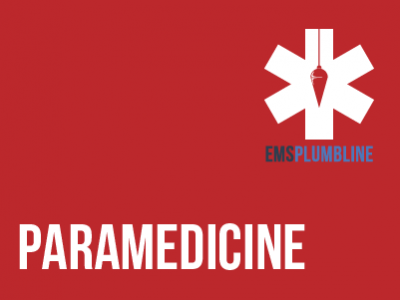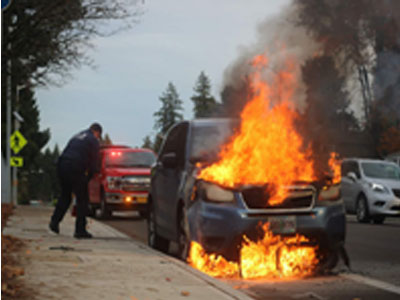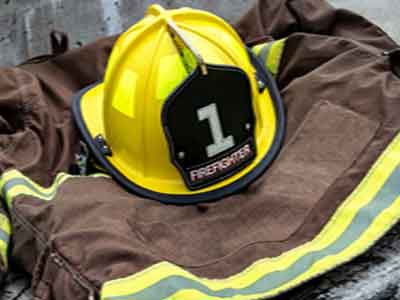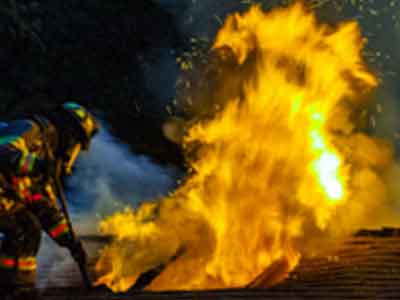 |
Pensamiento Crítico y la Toma de Decision (Spanish) Critical Thinking and Decision-Making |
1.00 |
Aprenda estrategias para resolver problemas cotidianos y tomar decisiones reflexivas y bien informadas.
Learn strategies for solving everyday problems and making thoughtful, well-informed decisions. |
 |
Relaciones Contenciosas (Spanish) Contentious Relationships |
1.50 |
Este curso le proporcionará las bases para mantener relaciones románticas saludables. También te permitirá reflexionar sobre las relaciones pasadas y actuales e identificar por qué fracasaron. Finalmente, te brindará las habilidades para reconocer las señales de alerta en posibles intereses amorosos y dentro de ti mismo. Este curso le enseñará a minimizar los efectos de las relaciones conflictivas en su vida, así como en la vida de sus hijos.
This course will provide you with the foundation for maintaining healthy romantic relationships. It will also allow you to reflect on past and current relationships and identify why they failed. Finally, it will give you the skills to recognize red flags in potential love interests and within yourself. This course will teach you to minimize the effects of contentious relationships on your life, as well as on the lives of your children. |
 |
CompTIA Advanced Security Practitioner (CASP+) - Exam CAS-003 |
40.00 |
30 Bird's CompTIA Advanced Security Practitioner (CASP) CAS-003 course provides the knowledge needed to implement security solutions within an enterprise policy framework, using a vendor-neutral format. This includes risk and vulnerability management programs, organizational policies and training, applied cryptography, system security, network security, identity management, and incident response. This course maps to the CompTIA CASP certification exam. Objective coverage is marked throughout the course.
Students will benefit most from this course if you intend to take a CompTIA Advanced Security Practitioner CAS-003 exam. |
 |
Introduction to RSI Part 1—Pharmacology Overview |
1.50 |
This course has been designed for the paramedic who is entering a Rapid Sequence Induction (RSI) course for the first time, or the RSI student who needs a brief review. Nicole M. Acquisto, Doctor of Pharmacy, does a fantastic job of summarizing medication concerns with each phase of the process. Final Exam: This multiple-choice exam is designed to test your knowledge of the material you just reviewed. You have two attempts to gain an 80% or higher on this exam. Please take your time and answer each question carefully. |
 |
A K-12 Student Guide to Title IX |
1.00 |
In this course geared towards K-12 students, you'll learn about Title IX and your rights under it. Title IX is a federal civil rights law that prohibits sexual discrimination in educational institutions that receive federal funding. Under Title IX, discrimination on the basis of sex can include sexual harassment or sexual violence, such as rape, sexual assault, sexual battery, and sexual coercion. This course helps students to identify their rights under Title IX, and describe their school’s responsibilities under the law. |
 |
Basic Spanish Skills |
1.00 |
This course covers the basic conventions of the Spanish language. This course will help you learn how to use Spanish conversationally and in everyday life. In addition, you will learn how to use Spanish in times of emergency or specific situations. |
 |
Mental Health First Aid in the Classroom |
1.00 |
A student shouts in rage, “I wish I were dead!” Is he expressing suicidal ideation? A student quickly covers cut marks over her left forearm. Should we approach her or respect her privacy?
The National Alliance on Mental Illness data show that one in five adolescents between the ages of 13 and 18 will experience a severe mental illness, and only 20 percent will receive treatment. We know, then, that our students are coming to us with mental health needs that are greater than ever before. This can feel overwhelming, especially when we want to help our students achieve to their fullest potential and are not sure how to.
The good news is that basic mental health first aid can offer practical, valuable tools. We don’t need to be a cardiac surgeon to perform CPR, and sometimes CPR can save a life. Similarly, we don’t have to be a licensed mental health professional to provide basic mental health first aid in the classroom.
|
 |
Cultural Diversity in School Settings |
1.00 |
This course contains definitions of diversity, equity, and inclusion (DEI) and the role DEI plays in the school setting. Embracing diversity, equity, and inclusion benefits everyone within a K-12 institution: faculty, staff, students, and families.
Learners will reflect on the different elements of their own identity and how that impacts their perception of others. This course will also discuss the role of bias in the school setting. |
 |
Understanding the Freedom of Information Act (FOIA) in Schools |
1.25 |
This course includes comprehensive information about the Freedom of Information Act (FOIA) and its implications in educational institutions. It includes FOIA basics, compliance requirements, best practices, and case studies relevant to schools. This is just one of the many K-12 Education courses we offer. |
 |
Exploring Developmental Needs and Characteristics of Different Age Groups |
2.00 |
Certain developmental needs and traits are associated with younger school-age children, while others are typical of older school-age children and youth. While the differences between school-age children of different ages are not clear-cut, there are some general traits and tasks that are often associated with younger (ages 5 – 7), middle (ages 8 – 10), and older (ages 11 – 12) school-age children and youth. Understanding these differences helps staff plan appropriate activities and guidance strategies for children of different ages. |
 |
How to Build Relationships That Work |
1.00 |
Most of us already know that relationships matter in any field, but particularly in education. The question is: how? How do I build life impacting relationships with students? How do I build resourceful relationships with my colleagues on campus? How do I build supportive relationships with my students' parents? Based on the book Relationships That Work, this workshop presents a framework—the practice of four essential skills that will posture and position any educator to a place of relational readiness. 1) Reflecting (on why I am here); 2) Directing (the fuel of my emotion); 3) Connecting (building relational bridges across differences) and 4) Protecting (my mind, my heart, and my body from toxic, hurtful people). |
 |
Animal Behavior 3: Experimenter, Observer, and Sampling Bias |
1.00 |
This course will give an overview of different types of bias that can impact a study on animal behavior. Information contained in this course will help ensure observers are aware of how experimenter, observer, and sampling bias can impact data collection and analysis, and of precautions to consider and take before starting a study. |
 |
Animal Behavior 4: Reliability and Validity |
1.00 |
This course will help ensure that the data you collect in animal behavior research is repeatable, consistent, and actually measures the features of a target behavior. This is called reliability and validity. |
 |
Structural Search Operations (NYS12) |
1.00 |
This lesson familiarizes the firefighter with structure fire search and rescue operations. The lesson reviews primary search methods including Orientated, TIC Led and Vent Enter Search. Methods for conducting structural search as well as managing occupants and victims are introduced. These methods are based on operational risk assessment with firefighter safety as the prime focus. The lesson is evaluated with in-lesson activities and a final multiple choice quiz. |
 |
Vehicle Fire Operations (NYS05) |
1.00 |
This course is a general overview of safe firefighting operations at vehicle fires. The lesson discusses proper risk management of a vehicle fire through the identification of hazards and application of safe, effective, and efficient operations. Several types of vehicle fires are described and hazards associated with each are identified. The tactical needs and priorities of vehicle fire operation are reviewed. Finally, a safe procedure for performing suppression tasks at a vehicle fire is introduced. The course is evaluated with a multiple-choice quiz. The firefighter must achieve a score of 80% or better to pass the course. |
 |
Basic Building Construction (NYS04) |
1.00 |
This is a basic lesson for the introduction or review of building construction for the firefighter. The lesson defines five types of building construction and identifies the risks and hazards associated with fighting fires in these structures. The lesson is evaluated with a final multiple-choice quiz. A grade of 80% or better is required to pass this course. |
 |
Fire Behavior Basics (NYS02) |
1.00 |
This lesson introduces the basic chemistry and physics of fire behavior. The lesson defines combustion, reviews the fire triangle and components of the fire tetrahedron. The stages of fire develop and accompanying characteristics are discussed with a focus on heat transfer and how it plays a part in fire develop. The lesson is evaluated using a brief quiz covering the material included in the lesson. |
 |
Exploring Four Areas of School-Age Development |
2.00 |
One of the most helpful ways to gain an understanding of the needs and interests of youth between 5 and 12 is to examine their development from four different perspectives: 1) Physical Development, 2) Cognitive Development, 3) Social Development, and 4) Emotional Development. It is important for staff to keep all four of these areas in mind when planning and implementing program activities and experiences. Keeping the four areas of development in mind leads staff to design a balanced set of experiences that nurture and growth and development of the “whole child.” |
 |
Computer Hardware Technician - Exam 220-1001 |
24.00 |
30 Bird's Computer Hardware Technician course provides the basic knowledge needed to install, configure, and support computer hardware and networking equipment. This includes:
- Assembling components based on customer requirements
- Installing, configuring and maintaining PCs and devices for end users
- Understanding the basics of network protocols and infrastructure
- Properly and safely diagnosing, resolving, and documenting common hardware and network issues
- Applying troubleshooting skills
- Understanding the basics of virtualization, desktop imaging, and deployment.
This course maps to the CompTIA A+ 220-1001 certification exam. Objective coverage is marked throughout the course.
This course assumes that you have basic computer knowledge. |
 |
Introduction to Risk Management |
1.00 |
This an introductory course that introduces the firefighter to the concepts of risk management. The concepts introduced in this course are intended to create a healthy attitude regarding safety and begins a process of developing a safety-minded culture. The definitions of hazard and risk are defined and the concept of risk management is explained. This explanation of risk management is intended for firefighters who need a rapid and effective method for identifying and mitigating dangers on the fire ground. |
 |
Introduction to Incident Command and Control |
1.50 |
This course is based on the National Incident Management System (NIMS). This course uses lessons to describes a phased process for the implementation of NIMS management characteristics into an Incident Command System. This phased process is a common-sense approach to emergency scene incident command based on the typical timeline for fireground development. It is important that you review local municipal law and organizational policies for implementing Incident Command. This course presents a system for implementing incident command during emergency operations. Incident Command does not have to be implemented using this system however, it needs to be implemented using a system. |
 |
PPE Care and Maintenance |
1.00 |
This course describes the required care and maintenance necessary to keep your personal protective equipment in service and able to afford you the highest level of protection. The objective is to promote competency in personal protective equipment inspection procedures based on NFPA 1851 standards. Students should also familiarize themselves with agency guidelines, policies, procedures, and best practices for documenting and reporting concerns with issued personal protective equipment. |
 |
Tactical Ventilation |
1.00 |
This course discusses tactical ventilation on the fire-ground. The course discusses ventilation as the introduction of fresh air into the building and identifies the affects of ventilation on modern fire behavior. Ventilation tactics and tasks are reviewed and safety considerations for this operation are identified. The lesson is evaluated with a 15-question multiple-choice quiz. A grade of 80% is required to pass this course. |
 |
Ground Cover Fires |
1.50 |
This course is an introductory level course that introduces the basic concepts of fighting fires that involve natural ground cover. This course describes fire behaviors associated with ground cover fires, identifies the types of equipment as well as methods used to combat these fires. The lesson also identifies specific hazards associated with ground cover fires and describes methods for mitigating the risk of those hazards. |
 |
Introduction to Fireground Size-up |
2.00 |
This course is an extensive introduction to fireground size-up and is a prerequisite for all other Vigilant size-up courses. This lesson defines the term size up and describes its purpose in fireground operations. The elements of a proper size-up are defined and described. The course introduces a five-step procedure for implementing the size-up process on the fireground. Each step of this procedure is defined and described with an explanation of the elements that are identified during each step. The lesson concludes with an overall summary and final evaluation. |


























